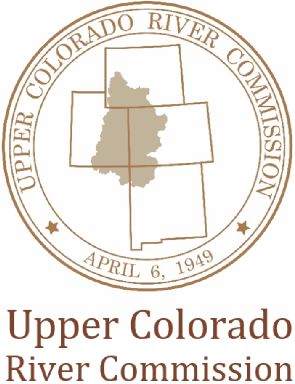For the original article in the Wyoming Tribune-Eagle, please click here.
May 13, 2021
Allow me to grab the handle of the axe George Sibley’s recent article planted in a ceiling rafter in his column (WTE, April 29, 2021) and explain whether it is hyperbolic illusion. I agree with George’s article in many places. But there are other areas crying out for correction.
I have represented Wyoming since 2003 on the Upper Colorado River Commission, the entity through which the Upper Division states assure compliance with the 1948 Compact. The compacts on the Colorado River are both state and federal law. George suggests that the states should change them. But, changing them would require the agreement of seven state legislatures as well as congress. This was a big hurdle before, and that hurdle is much taller today.
Where George and I agree is that the hydrology prior to the 1922 Compact was overly optimistic, given what we now know about the river’s yield. And the non-depletion language in the 1922 Compact says we can’t cause the flow at Lee Ferry to fall below a certain amount, which is 75 million acre-feet in 10 years (not 7.5 million per year). But that requirement only affects use outside of our rights to consume water perfected before the compact. Where George says “To maintain that flow in a drought, the upper states would bear the full pain of the drought for the whole river” he is 100 percent wrong.
In Wyoming, pre-compact uses are larger than post-compact uses. Those uses of water will remain. Legal water transfers in the states, will move some of that water around, but those rights will see no shortage. In the event of curtailment, might the Upper Division states have to reduce uses? Sure. Do we bear the entire shortage, as George says? No.
I disagree that the Upper Division states somehow chose between interpretations of the 1922 Compact. The language is clear. The 1948 Compact is an instrument that establishes the upper states’ commitment not to violate that 1922 requirement. It is the upper states’ agreement to self-regulate so a violation does not occur, rather than wait for a “call.”
A “call” on the Colorado River is another concept with which I have always taken exception. I challenge anyone to find that language in the 1922 Compact. It’s not there. What is there is an obligation to perform. A lawsuit could emerge claiming the Upper Division States should do this or that, but there is no “compact call” on the Colorado River.
All our prodigious pre-compact uses survive in every scenario. Now, the Lower Basin states of CA, NV, and AZ are planning for shortages to what heretofore has been a constant supply of water from Lake Powell. They have put unused, conserved water into “Intentionally Created Surplus” accounts in Lake Mead. In contrast, since before 1922 the Upper Division states have felt routine shortages already – almost everywhere. In Wyoming, we see shortages every year. They see shortages in Utah, in Colorado, and in New Mexico. The key reason that the Lower basin is now facing shortages is that their storage is all above them – in Lake Mead. The Upper Division states’ storage is largely below us – in Lake Powell. So what is it that largely restricts water use in the Upper Basin? It’s how much water Mother Nature gives us in annual snowpack. Runoff at our headgates. The Compacts don’t change those facts. Compared to the Lower Basin, we are a “run of the river” system.
Demand Management, a concept that is being investigated but that has an uncertain future, would need funding. It also needs more technical and legal research. If we can define a mechanism whereby Upper Division state water users can enter a voluntary system of conservation that solves the “non-depletion” requirement question, versus mandatory regulation of junior uses under a compact curtailment, shouldn’t we at least look?
There is no understudy for the Colorado River Compact of 1922 waiting in the wings. If we don’t work within its four corners, like we did in the numerous agreements on the river since at least 2000, then the river sees chaos. We must look at current apportionments and move ahead in what appears to be a water-tight future. We don’t need new apportionments, we need creative ideas on how to adapt to the “new hydrologic normal” within the apportionments we have. And when I say we, I’m referring to state administrators, the federal government, tribes, NGOs, water users, and all other stakeholders too numerous to mention here.
We could toss the 1922 and 1948 Compacts and let the courts run the river for 20-30 years until an acceptable paradigm emerges. But that is destined for failure. The hard-working water professionals along the Colorado River have found ways in the last 30+ years to develop conservation plans, promote system augmentation, provide for sediment flows in the Grand Canyon, manage for endangered fish, and control salt, and still serve the consumptive needs along this river. Not once were we paralyzed by an axe in the rafter. It’s a history I’m proud of. If there were ever a community that can solve problems like we face today, without throwing the baby out with the bathwater, it’s the Colorado River water community.
Patrick T. Tyrrell
Retired Wyoming State Engineer
Wyoming Commissioner, Upper Colorado River Commission
For the original article in the Wyoming Tribune-Eagle, please click here.

